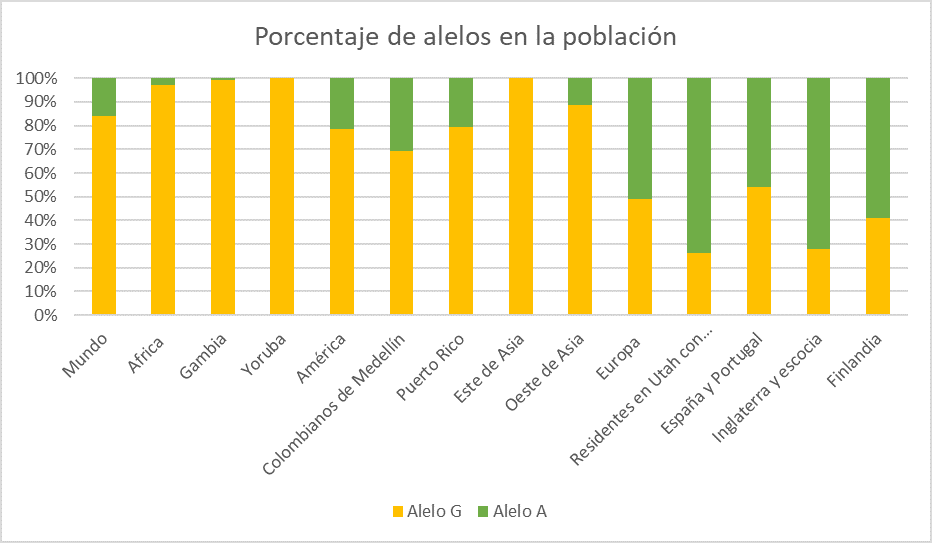Nowadays it is very common to find a wide variety of different types of milk; among them, lactose-free milk is one of the great choices of society in the face of a self-diagnosed lactose intolerance; but does this choice really make sense?
What is lactose?
Lactose is a disaccharide made up of glucose and galactose, which is the main sugar present in mammalian milk. In order to digest it, we need an enzyme called lactase which is able to break the bond between glucose and galactose.

In humans the activity of this enzyme is highest at birth; it decreases until the age of about 5 years where it disappears completely.
So why are some people able to tolerate lactose?
This is where SNPs or single nucleotide polymorphisms come in. nucleotidewhich consists of a mutation punctual on a single base, which can have various consequences.
Human beings share an almost identical sequence in the same positions of our DNASNPs are mutations that occur spontaneously at a certain point in time, some without any consequences and others with consequences that can even be lethal.

In particular the SNP RS4988235 is the most important of the 2 SNPs that allows our organism to continue to synthesise lactase; even if it is not found within the gene lactose gene, if not the MCM6 gene; the latter appears to act as a cis-element capable of enhancing differential transcriptional activation of the lactase promoter.
OK, so far so good, but how many people possess this “superpower”?
This depends on many factors, but the most important one, as always depends on the population and their ability to adapt to change.

As we can see from the graph, approximately 15% of the world’s population possesses the allele A; which is the one that allows us to degrade lactose; but it all depends on your ancestry, for example, in an African or East Asian population this allele is not represented, so no one there is able to degrade lactose.
On the other side we have the most evolved populations in relation to this polymorphism and that have adapted to this mutation, which are found in Europe, more specifically in Northern Europe.
Lactose intolerance in Spain
In the case of Spain, approximately 50% of the population is lactose intolerant, the vast majority of intolerant people consume milk with lactose and are unaware of their intolerance and have become accustomed to its adverse effects (tummy ache, gas, diarrhoea…), the solution is simple, buy lactose-free milk, although this does not mean that it is healthier, simply that the enzyme that we are unable to synthesise has been added to normal milk, thus avoiding the problems that it can cause us.
On the other hand, the fermentative bacteria in yoghurt are able to break down lactose, so by taking yoghurt with our diet, our intestinal microbiota helps us to amply supply our lactase requirements.
As in the case of lactose, there are many other diseases caused by a single mutation in a specific area of the genome, such as Crohn’s disease or ulcerative colitis, and it seems incredible that a single change in a specific area of a genome of 3.2 billion base pairs can have such great consequences.
Find out more about how a Ukrainian civilisation invaded the Iberian Peninsula in just 300 years without war here.